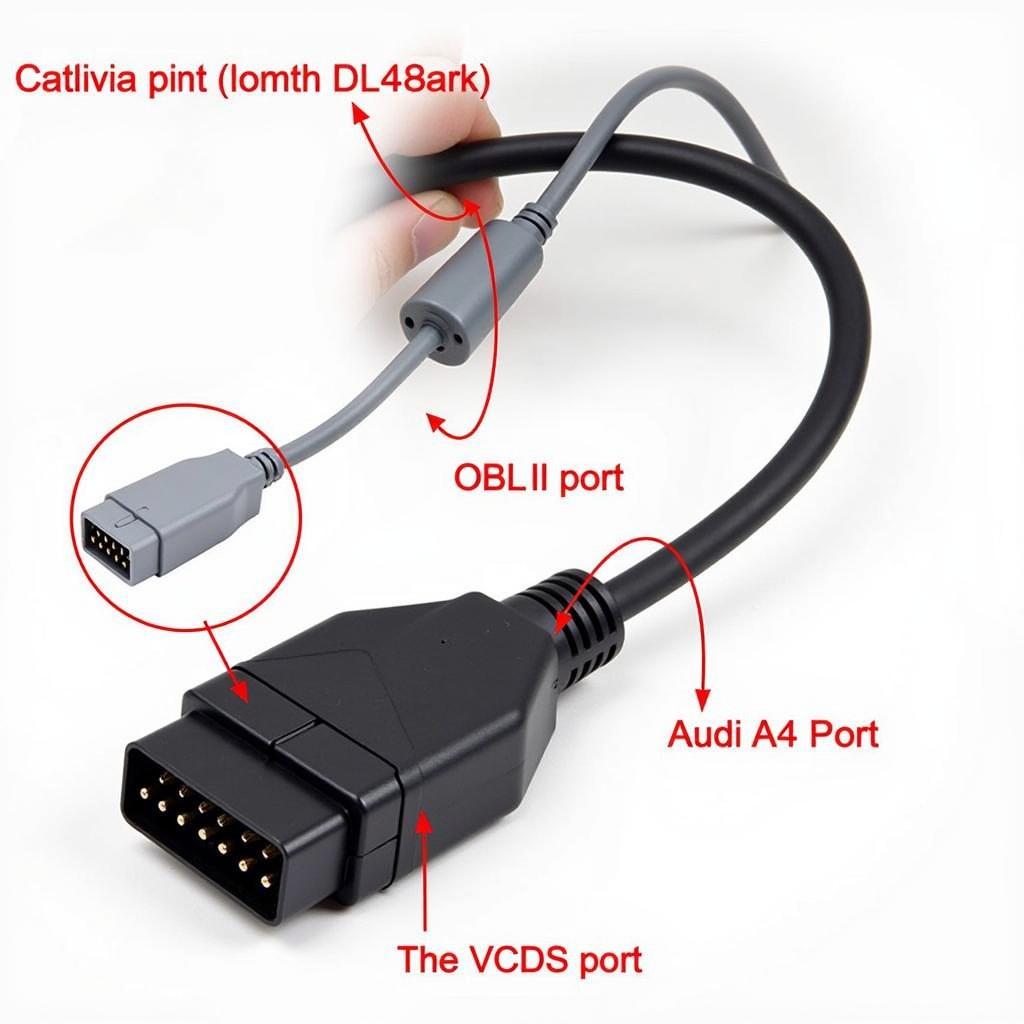The k dcan vcds interface is a crucial tool for diagnosing and coding Volkswagen, Audi, Seat, and Skoda vehicles. Understanding its capabilities and limitations is essential for both professional technicians and DIY enthusiasts. This guide provides a deep dive into the world of k dcan vcds, exploring its functionalities, applications, and how it can empower you to troubleshoot and maintain your vehicle effectively.
Understanding the k dcan vcds Interface
The k dcan vcds interface, often referred to as a VAG-COM cable, allows your computer to communicate with your vehicle’s onboard control modules. This communication enables you to read and clear fault codes, access live data streams, perform adaptations, and even code certain modules. This tool is invaluable for identifying the root cause of issues, monitoring vehicle performance, and customizing features. The k dcan cable is specifically designed for older VW, Audi, Seat, and Skoda models, typically those manufactured before 2005. It utilizes the K-Line and CAN protocols for communication.
While the k dcan vcds offers significant diagnostic power, it’s important to understand its limitations. It might not be compatible with newer models that utilize different communication protocols, such as UDS. Understanding these limitations ensures you choose the right tool for your specific vehicle. For instance, if you’re working on a newer BMW, you might want to consider exploring options like those discussed in our bmw vcds article.
Using k dcan vcds for Diagnostics
One of the primary uses of the k dcan vcds interface is for diagnostics. By connecting the cable to your vehicle’s OBD2 port and running the VCDS software on your computer, you gain access to a wealth of information. You can read fault codes stored in various control modules, providing crucial clues about potential problems. You can also clear these codes after resolving the underlying issue.
Accessing live data streams allows you to monitor sensor readings and other parameters in real time, aiding in diagnosing intermittent faults or understanding system behavior. This feature allows you to observe how various systems interact and respond under different operating conditions.
Furthermore, the k dcan vcds enables you to perform adaptations and basic coding. Adaptations allow you to adjust certain parameters within control modules, such as throttle body alignment or setting the service interval. Coding allows you to enable or disable specific features, potentially adding functionality or customizing your vehicle to your preferences.
Choosing the Right k dcan vcds Cable
Selecting the correct k dcan vcds cable is paramount for successful diagnostics. Counterfeit cables can lead to unreliable communication, inaccurate readings, and potential damage to your vehicle’s electronics. Always opt for a genuine cable from a reputable supplier. You can find valuable resources and information on compatible vehicles on our vcds supported cars page. This will help you determine the appropriate cable and software version for your specific car model.
Common Applications of k dcan vcds
The k dcan vcds finds applications in various scenarios:
- Troubleshooting engine issues: Identifying misfires, sensor failures, and other performance problems.
- Diagnosing ABS and airbag systems: Reading and clearing fault codes related to braking and safety systems.
- Performing adaptations: Adjusting throttle body alignment, setting service intervals, and other module-specific adaptations.
- Coding convenience features: Enabling or disabling features like automatic locking or daytime running lights.
- Resetting service indicators: Similar to the vcds esi reset process, this tool can be used for service interval resets.
Conclusion
The k dcan vcds interface offers a powerful and versatile solution for diagnosing and coding VAG vehicles. Understanding its capabilities, limitations, and proper usage empowers you to maintain and troubleshoot your vehicle effectively. By choosing a genuine cable and utilizing the full potential of the VCDS software, you can gain valuable insights into your vehicle’s health and performance. Similar functionality and more can be found using other interfaces, like those covered in our vcds k+dcan guide.
FAQ
- What is k dcan vcds used for? Diagnosing and coding older VAG vehicles.
- What vehicles are compatible with k dcan vcds? Primarily older VW, Audi, Seat, and Skoda models.
- Where can I buy a genuine k dcan vcds cable? From reputable suppliers.
- How do I use k dcan vcds? Connect to the OBD2 port and run the VCDS software.
- What are the limitations of k dcan vcds? Might not be compatible with newer vehicle models.
For further questions, please explore our k+dcan vcds resource.
Contact us for support via Whatsapp: +1 (641) 206-8880, Email: CARDIAGTECH[email protected] or visit us at 276 Reock St, City of Orange, NJ 07050, United States. We offer 24/7 customer support.

